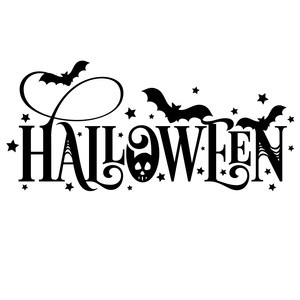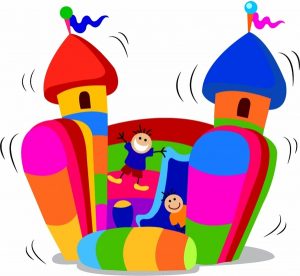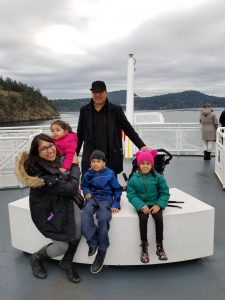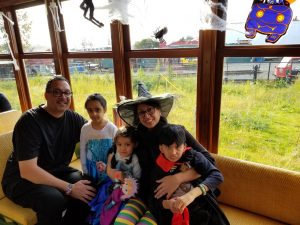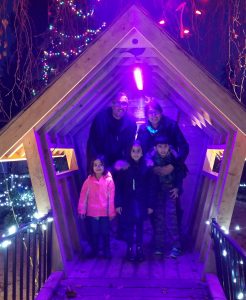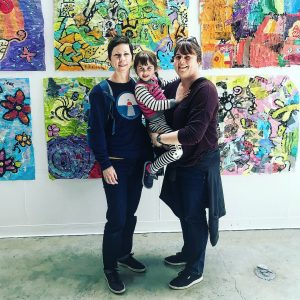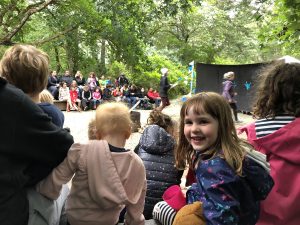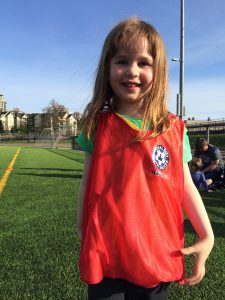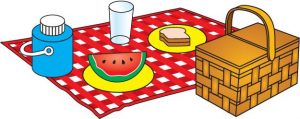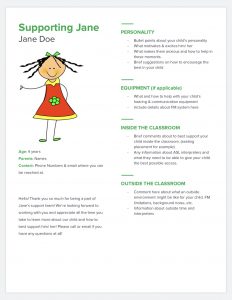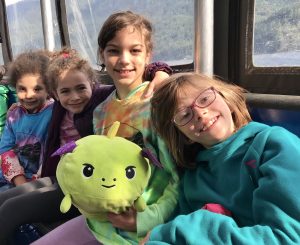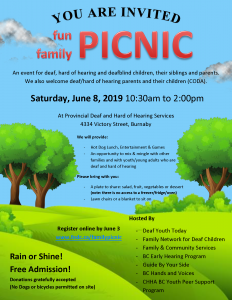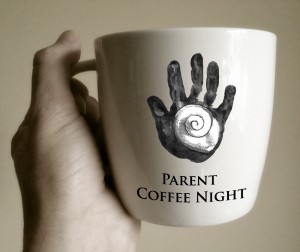By Lisa Bayko
2008 was an eventful year. Mike and I got engaged, and while planning our wedding we found out that we were expecting our first child, due August 1, 2009. Priorities shifted and marriage preparations were postponed as we started getting ready for our bundle of joy!
We were so excited to have our first baby, and apparently so was the baby, as he couldn’t wait! Our little boy Travis made his way into the world five weeks early. After a fast delivery with a few complications, Travis was taken straight to the NICU to be cared for, as he needed to be watched and put on some weight before he could come home with us. Most importantly he needed to be a SUPER HERO under the jaundice lights. (I still have the mask it was just too cute!) Travis was also a very poor eater at first, mainly because he was a preemie.
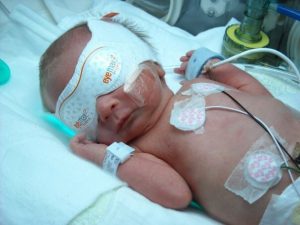
Travis spent the first three weeks of his life in the NICU. At about 10 days old Travis had his hearing screening done, and we found out that Travis had not passed. Ok, I thought, maybe it’s just because he is a preemie – he will grow and he will pass, or maybe it’s just fluid in his ears. I didn’t put too much thought into it at that point, as I was more worried about him eating and keeping it down so he could come home.
After three very long weeks, we were finally able to bring Travis home. Then at 2 ½ months he had his first ABR and it was confirmed that Travis was hard of hearing. After getting the news from the audiologist, I was alone with with my little monkey in my arms crying. It was a long ride home, looking at my adorable little man, trying to wrap my brain around what was just confirmed. It was a very hard thing to have to tell Mike, as he couldn’t make it to the appointment due to work. There was crying and blame; it was the beginning to our grieving process. It was really unexpected for us, but in retrospect I guess it really shouldn’t have been, considering my older brother has similar hearing levels. Trying to process the news and still in shock, I got a call from my older brother. I was in tears and expressed my fears that Travis would be teased or have a difficult life, but my brother just kept reassuring me that my son was going to be ok. He reminded me that he has a pretty normal life, even though he had lots of struggles in school. He became a tow truck driver, got married and divorced and now has 2 grown kids. He asked why I was worrying when I know that his life turned out normal just like mine, the only difference being that he needed help to hear. We didn’t treat him any differently, and he was still a big pain-in-my-side older brother, who I wouldn’t change for the world!
We decided to get a second opinion and the results were the same, so Travis was fitted for his first pair of hearing aids at about four months old. The look on his face when he wore them for the first time was amazing! He could definitely hear my voice! I really wish I would have taken video or photos of the day, as it was a wonderful milestone in Travis’s life that I really wish I captured.
We went home with our new life tools for Travis, still nervous and still feeling denial because I felt like he could hear me without his hearing aids. I told myself that maybe he would grow out of it or maybe the second opinion was wrong too. I didn’t yet fully understand that while Travis could hear me with his hearing aids off, he was not getting all the information he needed and he was not hearing certain sounds. It took me a while to really come to terms with his hearing and the feeling that it was my fault, especially since there was hearing loss on my side of the family.
We enrolled at one of the amazing intervention centres. I got to see other babies, toddlers and preschoolers with all kinds of hearing levels and devices, and it really helped to see how all of them where thriving and full of life, just like my little man! We started learning and understanding his hearing loss and also received some new information from a CT scan and genetic testing. The CT scan confirmed enlarged vestibular aqueduct syndrome (EVA or LVA) a structural malformation of the inner ear. Enlargement of this duct is one of the most common inner ear causes associated with hearing loss.
Genetic testing confirmed Pendred syndrome, a genetic disorder that causes early hearing loss in children. It can also affect the thyroid gland. We were advised to have his thyroid monitored and avoid letting Travis hit his head on anything. How do you keep a toddler from falling? We talked about getting him a helmet, but we didn’t want to make him live in a bubble.
Then one morning Travis decided to have a tantrum and throw himself on the floor backwards. He hit his head on the base of a cement column hard and needed stitches. After that we expected a hearing drop but there wasn’t one, so at that point we decided to let him be a regular child. And any fears we had about him hitting his head in sports have been relieved by the fact that Travis is not sporty and doesn’t like the thought of winning and losing. I guess we got lucky on that one!
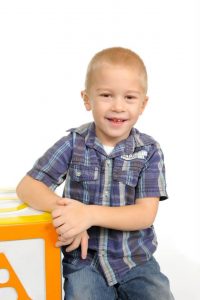
As a toddler, Travis really loved his early intervention appointments, baby group and being around people. He was very social, meeting most milestones, and was just a very lovable little man, but he could throw a tantrum like you wouldn’t believe! I kept waiting for him to grow out of it, calm down, listen, and follow instructions, but he didn’t. When Travis was four years old, his early interventionist suggested getting our doctor to send a referral to the Sunny Hill Hearing Team. We met with the team and everything seemed to be going well with Travis. At the follow up appointment, though, the doctor noticed Travis smelling everything, and he asked if this was something he did regularly. Well, yes it was, but I hadn’t thought anything of it.
This was my introduction to Autism Spectrum Disorder. We were very lucky to have had the same Doctor from the hearing team perform the autism assessment, as he was trained in both hearing loss and autism. I knew nothing about autism and decided not to “google it” until I really had to. I figured Travis was just a young, stubborn boy and saw nothing wrong with him.
Travis was first diagnosed with ADHD, and prescribed medication and then later got the diagnosis of Autism Spectrum Disorder. A spectrum it is! Every time we really feel like we are figuring him out he will do a complete 180 on us. He definitely keeps us on our toes and we’re always learning with him. Many people actually don’t believe he is on the spectrum because he has good eye contact and good speech, thanks to many years of early intervention for his hearing.
Travis is now 9 years old he is a very creative young man. He loves to work on stop-motion videos and is very good with technology. He loves swimming and gymnastics. Travis has always been very proud of his hearing aids, and he knows he needs them and relies on them. He is very independent with his hearing aids and can really advocate for himself when it comes to hearing. He is also a big brother as we’ve had 2 more sons.
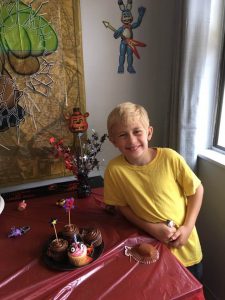
We have found the learning curve with ADHD and Autism is on-going, more so now that he is older and getting more aware that his brain is wired differently (autism doesn’t come with a manual!). We have not had any problems with him being teased, as kids just want to know “what’s that in your ears?” Travis simply replies “they are my hearing aids and they help me to hear!”
It’s been a crazy journey, with lots of challenges along the way, but Travis is a great kid who adds so much to our family!
